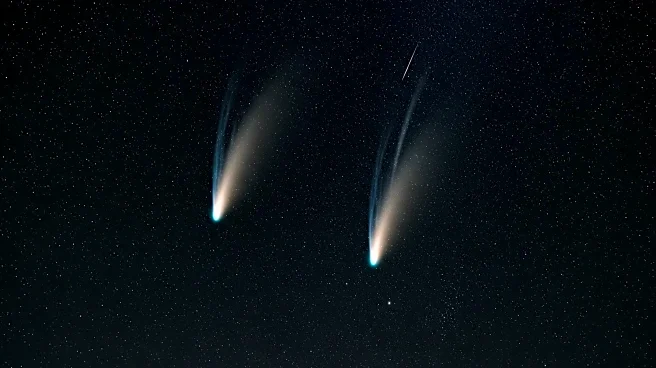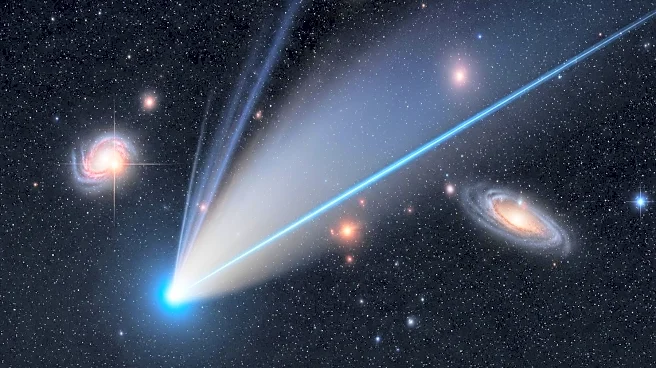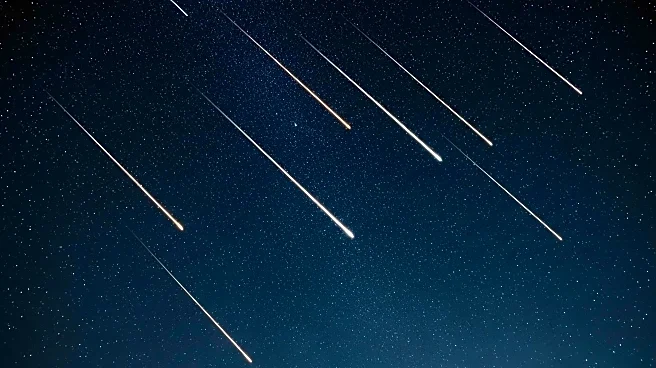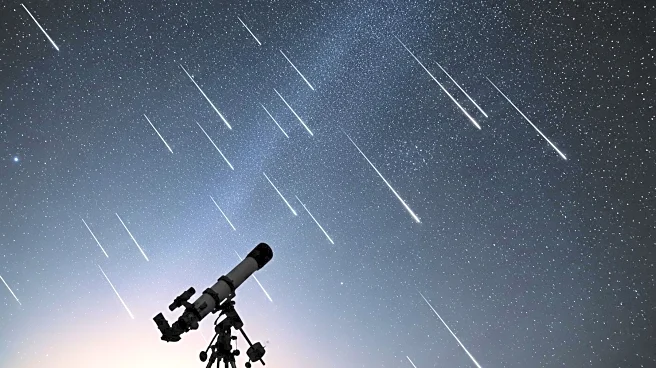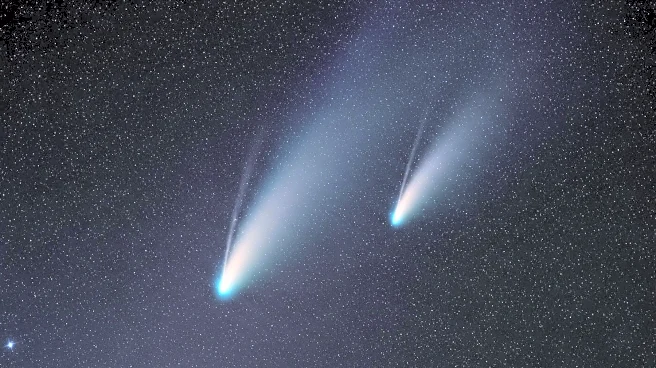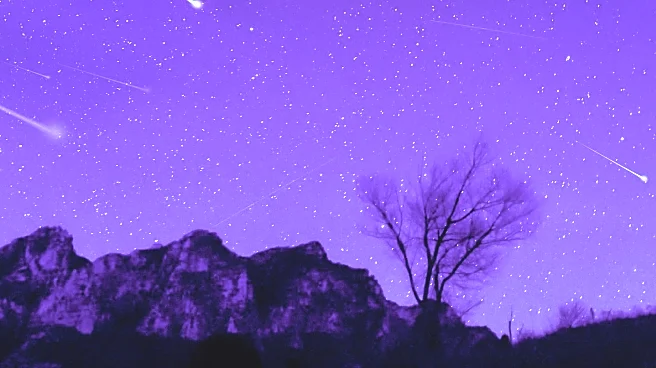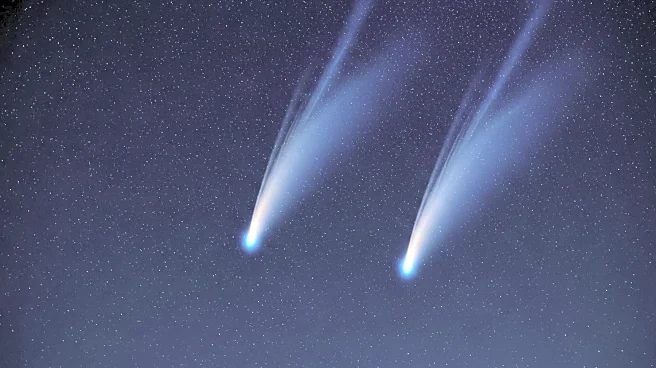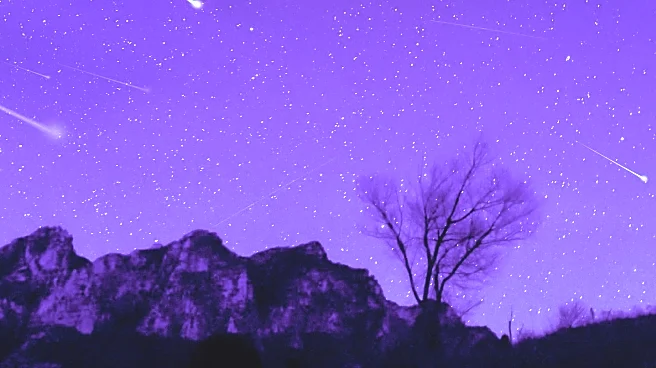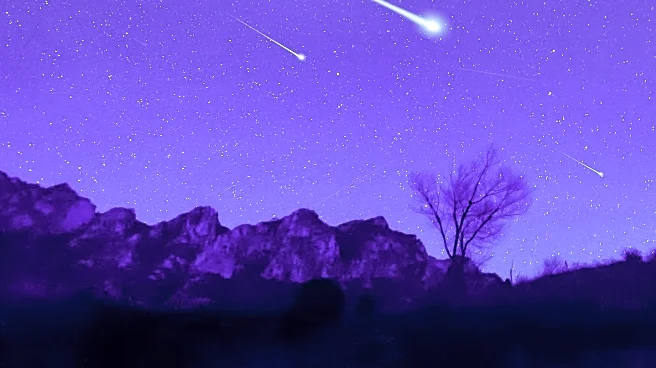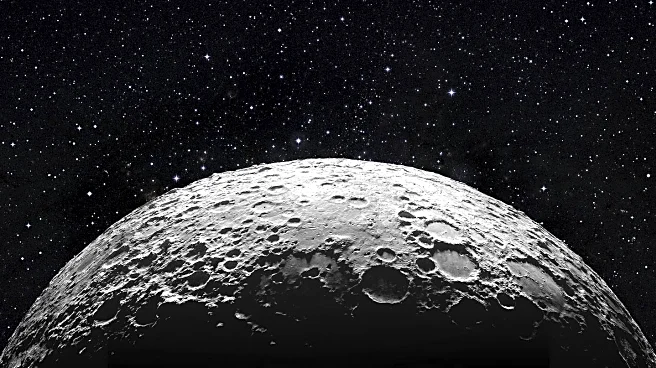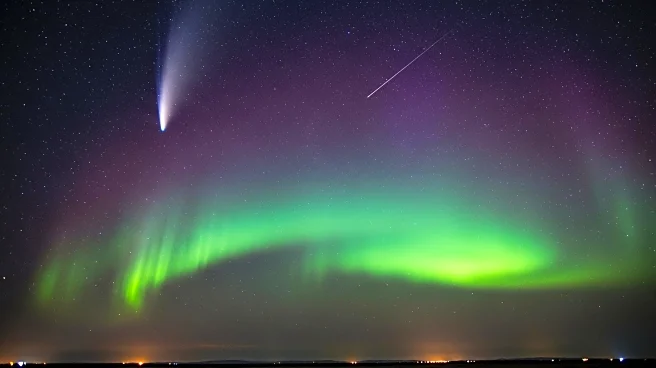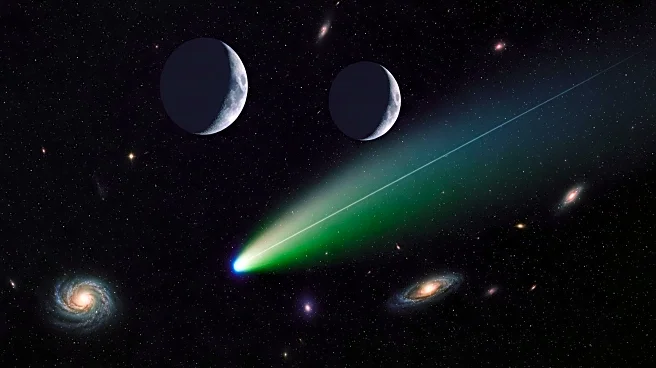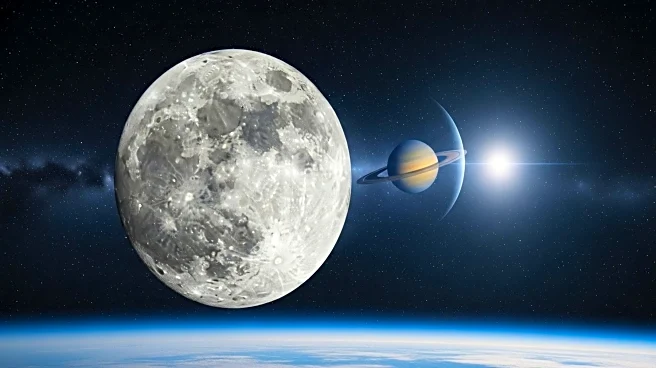What is the story about?
What's Happening?
In October 2025, skywatchers will have the rare opportunity to observe two newly discovered comets, C/2025 A6 (Lemmon) and C/2025 R2 (SWAN), simultaneously gracing the night sky. Comet Lemmon, discovered in January 2025, is expected to reach a brightness of magnitude 4 by late October, making it faintly visible to the naked eye under dark skies. It will be closest to Earth on October 21, 2025, at a distance of approximately 50 million miles. Comet SWAN, discovered in September 2025 via NASA's SOHO space observatory, will make its closest pass by Earth around October 20, 2025, at about 25 million miles away. SWAN is expected to peak near magnitude 6, requiring binoculars for viewing. Both comets will be visible during the Orionid meteor shower, which peaks on October 21-22, offering a unique skywatching experience.
Why It's Important?
The simultaneous visibility of two comets is a rare astronomical event, providing a unique opportunity for amateur astronomers and sky enthusiasts to observe celestial phenomena. Comet Lemmon and Comet SWAN, originating from the distant Oort Cloud, are long-period comets making once-in-a-lifetime visits to our skies. Their appearance coincides with the Orionid meteor shower, enhancing the spectacle for observers. This event highlights the dynamic nature of our solar system and the ongoing discoveries made possible by modern astronomical techniques. It also underscores the importance of dark sky preservation for astronomical observations.
What's Next?
Observers in the Northern Hemisphere will have the best view of Comet Lemmon, which will appear in the northwest sky after sunset by mid-to-late October. Comet SWAN will start low in the western evening sky and gradually climb higher each night. Stargazers are advised to find dark locations away from city lights to maximize visibility. As the comets approach their peak brightness, astrophotographers and amateur astronomers will likely capture stunning images of these celestial visitors. The event may inspire increased interest in astronomy and skywatching activities.
Beyond the Headlines
The appearance of these comets offers a reminder of the unpredictable nature of celestial bodies. Comets, often referred to as 'dirty snowballs,' can exhibit unexpected changes in brightness and tail formation. This unpredictability adds an element of excitement and challenge for observers. The event also highlights the role of amateur astronomers in discovering and tracking celestial phenomena, as demonstrated by the discovery of Comet SWAN through public data analysis. The presence of these comets during the Orionid meteor shower provides a unique opportunity to witness multiple astronomical events simultaneously.
AI Generated Content
Do you find this article useful?
